I am currently in Evanston, WY, on my first layover stay since leaving Casper eight days ago. I broke my one-day-a-week-of-rest rule without realizing it, keeping my eyes instead on the weather and the remoteness of the Casper-to-Evanston passage.
Today’s post is about Day 31, the day I rode with Keith and friends from the Sixth Crossing Center in Sweetwater Station to Rock Creek Hollow.
==================
July 1, 2021
Sixth Crossing Center to Rock Creek Hollow, WY
28 miles/1,800 ft
High-70s/light winds
https://ridewithgps.com/trips/70373461
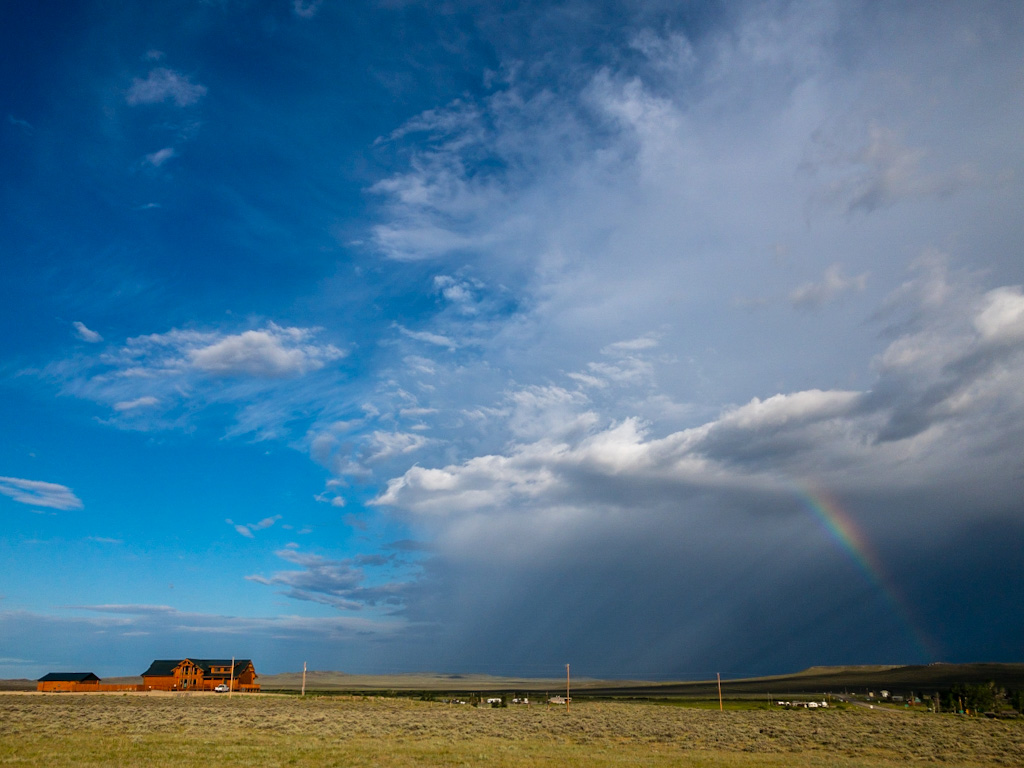
As you may recall, I was sleeping in the Cook’s trailer, temporarily relocated onto BLM land. Sometime before dawn I was woken by wind intense enough to shake the trailer. Which out here usually means . . . Yep, rain. A front passing through. It seemed maybe the ride would be callled off and I might end up spending a second night here, which all things considered, was not a bad option.
When I rose a little while later, everything was wet, but the front turned out just to be a passing squall that had already moved on. Instead of rain I was greeted by a rainbow and clearing skies in the west. So I packed my things to be ready to be picked up by Keith at 7, as arranged. He showed, and we rode back in the side-by-side to the center for breakfast. He, Ann, and I had a wonderful breakfast of french toast (with real maple syrup delivered by a trucker from somewhere back east who brings bottles with him and shares them) and eggs (supplied by a local rancher). I had my instant coffee, which Ann and Keith graciously allowed even though Mormons are not drinkers.
There was a meeting of the volunteers at 8:30 down at the bike barn (which is how I think of the equipment building). While they met, I lubed my bike and re-inflated my tires (daily tasks) and generally just got ready. It turned out that they had worked out a rather complex plan for the ride involving two trucks, a lot of driving (given the paucity of roads in the area), shuttling of two women cyclists forward to ride a section they hadn’t been on before, and—be still my heart—taking my bike trailer to the end of the day’s ride so I could ride unencumbered.

Four of us (all guys) left the center on bikes. I am tempted to say that once rolling, I felt as if the Saints became not Elders, but MTB riders, but that isn’t exactly true. Elder Hall told me I was perfectly welcome to call him Barry when he didn’t have his name tag on, but the interactions among the three men and in their relation with me never changed. They continued to call each other Elder. When a gate had to be opened, they took turns, usually without discussion, and worked the gate in a practiced fashion: One rider would dismount; another would hold his bike while he opened the gate; we’d ride through, everyone thanking the gatekeeper, who would then relatch the gate and take his bike back, thanking the holder. There was nothing formal about it, this was just their routine. But it had the same air of cooperation and mutual respect that seemed to color every interaction.
I don’t mean to make too much of this; after all, it is a small thing, and any group of riders can work out something similar. It’s just the way they went about it seemed indicative of what I have come to see as a lack of ego, a letting go of it, if you will, something rare in most gatherings of men. Keith is as hardcore as any rider I know. He is a California Triple Crown Hall of Famer, which means he has ridden 50 or more double centuries—that is, 200-mile rides—some, including his 50th, with Ann on the Da Vinci. And Barry is the ultimate sandbagger. He kind of walks with a little hunch in his back and a slight hitch in his step, carries a perpetual smile, and wears a hearing aid, but damn if he didn’t leave everyone in the dust, seemingly effortlessly, on every hill . . . The whole time showing that quiet smile and talking about what a powerhouse rider Keith was.
The first part of our ride was on private land along the Sweetwater River. At every turn I wanted to stop and take a picture. As it was, I would just tell everyone, as if they didn’t know, how amazingly beautiful the trail was. For those who know me in my daily life, I am not a big talker. But getting on a bike seems to loosen my tongue. Sometimes I actually get tired of hearing myself talk aloud, but at the same time, I find it hard to repress the urge. I am not so talkative when I ride on my own of course, except on occasion (to share unpleasantries with the wind, say, or a rude driver).
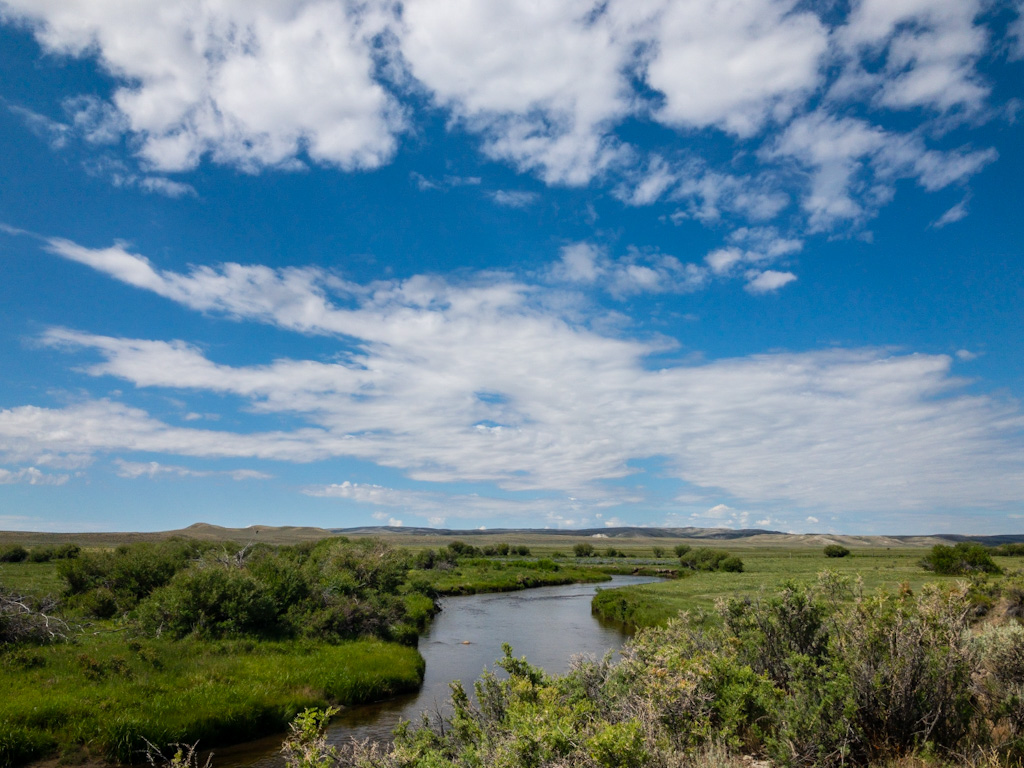
Nor, I should add, am I particularly emotive, alone or with others. But in the thirty hours I was with Keith and Ann, et al., I broke down a handful of times, such as when I told Keith how much it meant to me that he was here and that I might not have attempted the trip at all but for talking to him, and when I told him I still might have ended the ride at Casper, but that fear of letting him down motivated me to make the attempt. I broke down in front of the entire group when I told them about the kindness of people who have helped me along the way.
I had a very emotional visit with the Saints.
So when we were riding, as I was saying, I was annoyingly appreciative of the area they rode in. And it struck me that this stretch here along the Sweetwater was the stretch I was looking for way back in Kansas along the Little Blue River. You may recall the long Bernard De Voto passage I quoted from back then (in this post). It ended with, “This is what the grandfathers remembered when they told us stories.” But I never saw De Voto’s Little Blue River. The one I saw lay in a dry, dusty country, all farmed, hidden on private land, not easily reached, and even then, nothing like what it was in De Voto’s description or in the emigrants’. It may have been beautiful when the emigrants traveled it, and it may have been particularly so after crossing the dry prairie but still in the early part of the long voyage. But it wasn’t for me.
By the time the emigrants got to the Sweetwater, no one was really laughing or singing or maybe even talking much at all. They’d been on the trail two months or more. They’d probably had to bury a family member and then try to erase the gravesite. If they were in the Willie’s Handcart Company, they were starving and freezing and hanging on for dear life. So while there are descriptions of the Sweetwater as a good river, with drinkable water and plentiful forage, you do not hear about quilting and debate societies and children playing. You don’t really read about the good times in western Wyoming.
But to me, the Sweetwater I saw from the center and on this ride was exactly that stretch of trail. Beautiful water flowing peacefully, swaddled in a rich bottom land, perfect for camping (except for mosquitoes, of course, but when can you ever escape those?). It looked to me the very idyll of emigration, the easy times, the kind of picture that would motivate someone to emigrate, the mirage that it would all be like this. Of course we should trek two thousand miles to Oregon. Families do it every year. There is a natural road as if God himself ordained we should take it. It will be a once-in-a-lifetime adventure. Who would want to miss out on that? I saw all of that false promise in the Sweetwater.
What made the ride along the river even better was that I didn’t have to keep these thoughts to myself. I had three patient cyclists who indulged my praises of their riding ground. Barry commented mostly to himself that I always had all these nice things to say, and I thought, Oh Barry, if only you knew . . .
But isn’t that the point of a trip like this? To get out of your day-to-day self? To break your quotidian routine? To step outside and to see things with different eyes because the ones you use in your everyday world are no use to you out here. “Sufficient unto the day is the evil thereof” (Matthew 6:34). The passage comes from the Sermon on the Mount, you know, Behold the lillies of the field, and all that? And that is the message I need to hear but cannot. I cannot help but worry about tomorrow, what I will eat and where I will sleep. And yet, here was this day. This perfect day, that was handed to me almost in spite of all my preparation and planning and worry.
We rode along for hours. It is the first and will be the only day on this entire trip when I was not passed by a car in either direction. Eventually, we came to the challenge: Rocky Ridge. Jan’s notes have this to say:
Climbing over 700 feet in less than 2 miles, this ridge caused a lot of problems for pioneer hand carts and wagons alike.
In 1856, the rescue of the Mormon Willie and Martin Handcart companies crossed this ridge. From the base of Rocky Ridge to Rock Creek took the parties over 27 hours to travel the roughly 15 miles, partially due to a winter blizzard and a lack of adequate clothing. The handcarts companies had to be rescued before this point as 21 individuals perished in the valley below.
Rocky Ridge was also a known area for bad guys, thieves, etc. And, additional fun fact, Rocky Ridge Pony Express Station is believed to be the place where Mark Twain met Jack Slade (whom I wrote about here), a passage that made it into Twain’s Roughing It, quoted by nearly everyone who writes about the Pony Express.

What I can tell you, as a not very good hill climber, is that some of the pitches on the climb up Rocky Ridge were steep enough to where I doubt I could have made them were I hauling my trailer.
At one point, Keith was stopped ahead on the climb (patiently waiting for me) so I stopped next to him. All along the way from the center he’d pointed out certain things, such as a line of willows that must mark the emigrant road along the river, for instance. Here, he pointed around to the dirt road leading up to the ridge and showed me how it made a loop, then told me that this is one of the routes for the handcart re-enactments. They tend to be six-mile loops. He’d pointed out sections of the loop near the center and I had had to shake my head imagining teens hauling loaded carts up and down some of those hills. At one point I pictured Lisa and me telling Kazu we were sending him to a handcart camp, and had to laugh because I was sure his entire reaction would be to smile his beautiful teen-age smile and say, There’s no way. And yes, that would be the end of that.
The handcart re-enactments seem to play an important role in the modern Mormon church, and it is not my place to say anything about it. Nevertheless, though I am sure some of the more devout were let down when they heard this summer’s camps weren’t going to happen, I have to believe there are at least as many who whispered a prayer of thanks.
In any case, the hills used for the re-enactments at the center were one thing. These were of another order of difficulty. I had just dragged myself halfway up Rocky Ridge when Keith told me that this climb was part of the loop, and before my comment filter could kick into gear, I shook my head and said, You have a brutal religion. I caught myself then, too late. But Keith just laughed and asked if he could quote me.
Rocky Ridge surmounted, we continued on. We were no longer riding along the Sweetwater—the entire reason Rocky Ridge is part of the trail is it’s the only way to get around one section of the river—but rolling through range land. Beautiful, open country. Nothing I hadn’t seen before, but a pleasant ride in pleasant company. Until we came to the creeks.
Up to this point, in over a thousand miles of road and trail, I had never had to ford a creek: there was always a bridge. I mean, hello? This is 2021, right? Well, no one told the people in this part of the country. The road is here, the creek is there; if you want to continue, you have to get a little wet.
Barry went through first. He got up a head of steam and coasted through, lifting his feet off the pedals. Almost. At the very end, he had to pedal. But it didn’t look that bad.
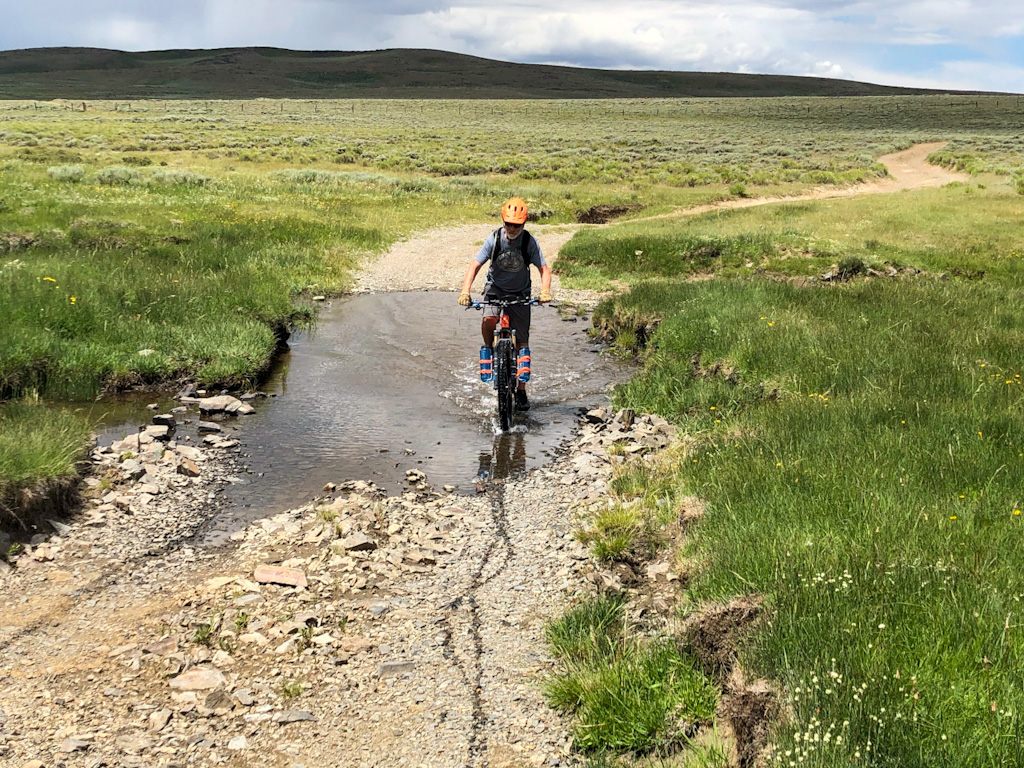
I, unfortunately, did not get as much speed up, so I got bogged down in the middle and nearly stopped. I pedaled the rest of the way through, but my feet were soaked. As it turned out, there were two more creeks to cross before we got to Rock Creek Hollow, our destination for the day. I crossed these more successfully, but by that time, it didn’t really matter. Shoes and socks stay wet for a very long time.
Rock Creek Hollow is also a Mormon site. It has a memorial honoring the Willie’s Handcart experience. It also has a campground, and it was my initial inquiry into possibly staying here that led me to getting in touch with Keith.
When we arrived, both trucks were there, the two women who’d ridden this upper section of the trail, and all the riders and drivers: seven of us total. It was around two in the afternoon and it looked like it might rain. Someone decided lunch would be nice, so we decided to drive the eight or so miles out to Atlantic City, Wyoming.
Go ahead, pause here, and look for it on a map. A tiny dot in the middle of nothing. I guess it was a mining town back in the day. It sits at the bottom of a steep gorge. I would hate to have to ride my bike out of it. But it is cute, at least in summer. Older buildings, mostly one-room cabins, are plaqued and dated. The town also sits on the Continental Divide Trail, so thru-hikers and bikepackers who are trekking the 3,000-mile trail from Canada to Mexico come in to eat at the Miner’s Grubstake, a restaurant/bar/small general store where we ate as well.
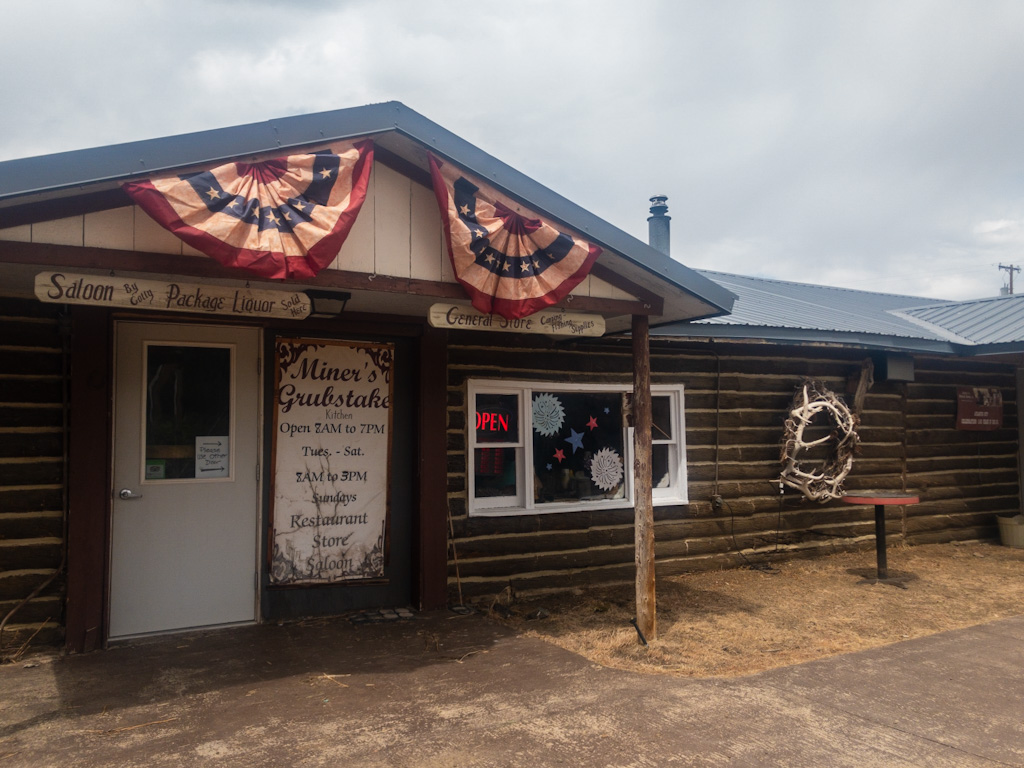
I had a grilled cheese, the only non-meat item on the menu other than pie (which I considered, but opted not to have). I had them add lettuce and tomatoes and it tasted fine to me. After our quick lunch, one truck headed back to the center (about a ninety-minute drive, if not longer), and Barry and Keith drove me back to Rock Creek Hollow where my bike and trailer were waiting (which meant at least a two-hour drive for them).
We arrived and got my things out of the storage area, and with nothing left to do, it was time for our goodbyes. We weren’t particularly maudlin about it, but Keith did say he felt like he was deserting me by leaving me in a deserted campground (closed due to Covid).
And there I was. Suddenly alone again after so much interaction. The camp seemed very, very quiet. But afternoon was fading and I had things to do.
I had a possible camp spot five or six miles ahead at Burnt Ranch, but thought that as long as no one was around, I might just as well find a quiet spot here at Rock Creek Hollow where no one would notice me. So I moved my bike and trailer to the back end of a parking lot near the rest rooms (which are left open), and was immediately set on by the entire mosquito population of Wyoming. In the mosquitoes’ defense, they were used to hundreds of kids being shipped in every day to feed on, and they must have felt neglected. But man it was bad. I sprayed myself, which kept them from landing on me, but they still flew incessantly around me, mostly in my face, unless I walked out to the road where there was enough breeze to deter the little vampires.
Ultimately, I was able to cook dinner and set up camp and sleep there illegally and without proper authorization for the night. But no harm done. I left no trace. Keith had urged me to walk the grounds and see the gravesites and read the plaques, and I thought it the least I could do, to thank him by paying heed to this part of church history that is so important to him.
I went to sleep thinking I’d had the best day of the trip that day, thankful for all the effort of everyone who had done so much to take care of me the last day-and-a-half. So much, it seemed, packed into such a short amount of time.

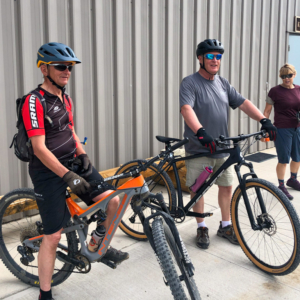
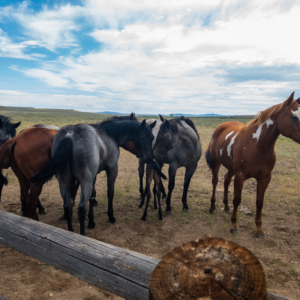

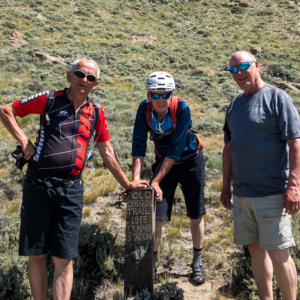
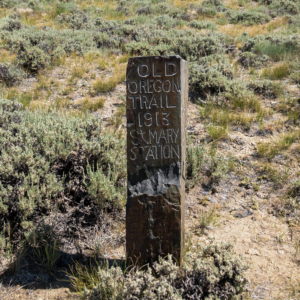
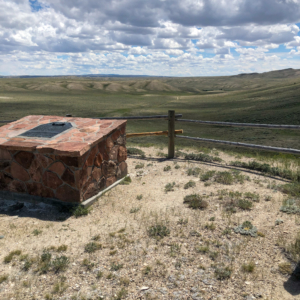
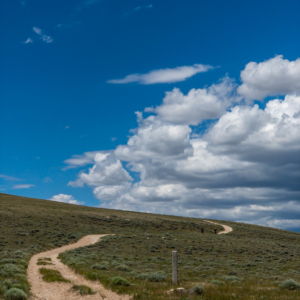
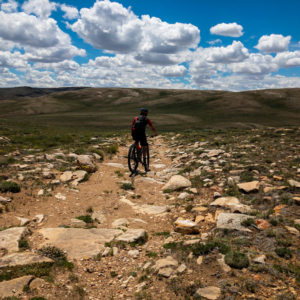
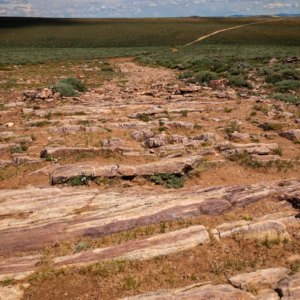
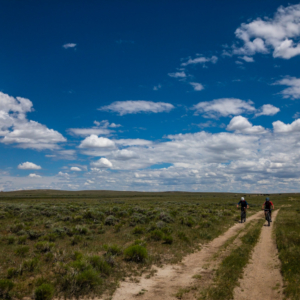
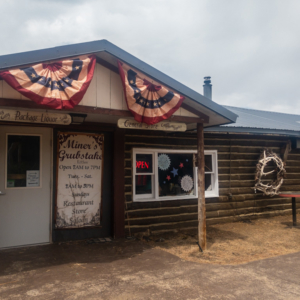
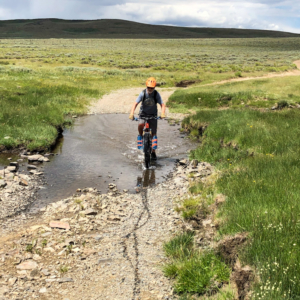
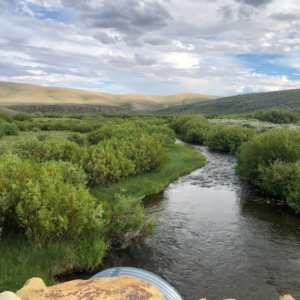


Wow what a life you’re having, so physical and spiritual at the same time. I just read Day 31. Now I’ll read the rest of the days. These people were like angels; so nice for them to pop in and watch you for awhile 🙂 Safe travels and good luck on the test of your ride.
They were like angels in a way. It was a lovely time with them.
Wow! What an experience! I’m kind of in awe of your ability to do something so hard and so beautiful, and your ability to write about it so well.
Kind words from a fellow writer. Thank you! As for the riding, it comes down to (1) stubbornness, and (2) not having much of a choice. You can camp anywhere on BLM land, but it would not have been very pleasant. The siren song of ice cream is a powerful motivator.
Yay for human interaction and exchange! Fab photos. brenda
What a magnificent day! (lily)
It really was, and I am so grateful to all the folks who did so much to make it happen. They seemed to have as much fun as I did, and I can only hope that’s true.
What an amazing day. Thanks for bringing us along.
-Valerie
I hope you still want to be along after the next day . . .
Beautiful photos and very revealing that it was no picnic riding it w/ or w/o a trailer. I do believe you have earned the past pioneers’ revere to metaphorically inscribe “Scott was here 2021′” somewhere alongside their markings.
A true compliment, especially coming from a monster riding animal like you.
Sounds like you’ve reached a spiritual moment riding with the Saints.. I continue to appreciate how you weave in your knowledge of MTB and moments of your thoughts on the ride with history and how you’re carrying me with you in your journey.
Thanks Brenda! Though, fair warning, there are less than spiritual moments in the days ahead . . .
Glad you had such a day. Are those the first horses you’ve seen on the Pony Express Trail?
No, I’ve seen others. But they’re usually much further away. I had one yell at me today. It must have been a quarter mile away, but with so much space, the sound carried ad if it were next to me. The horse stared at me until I rode away.